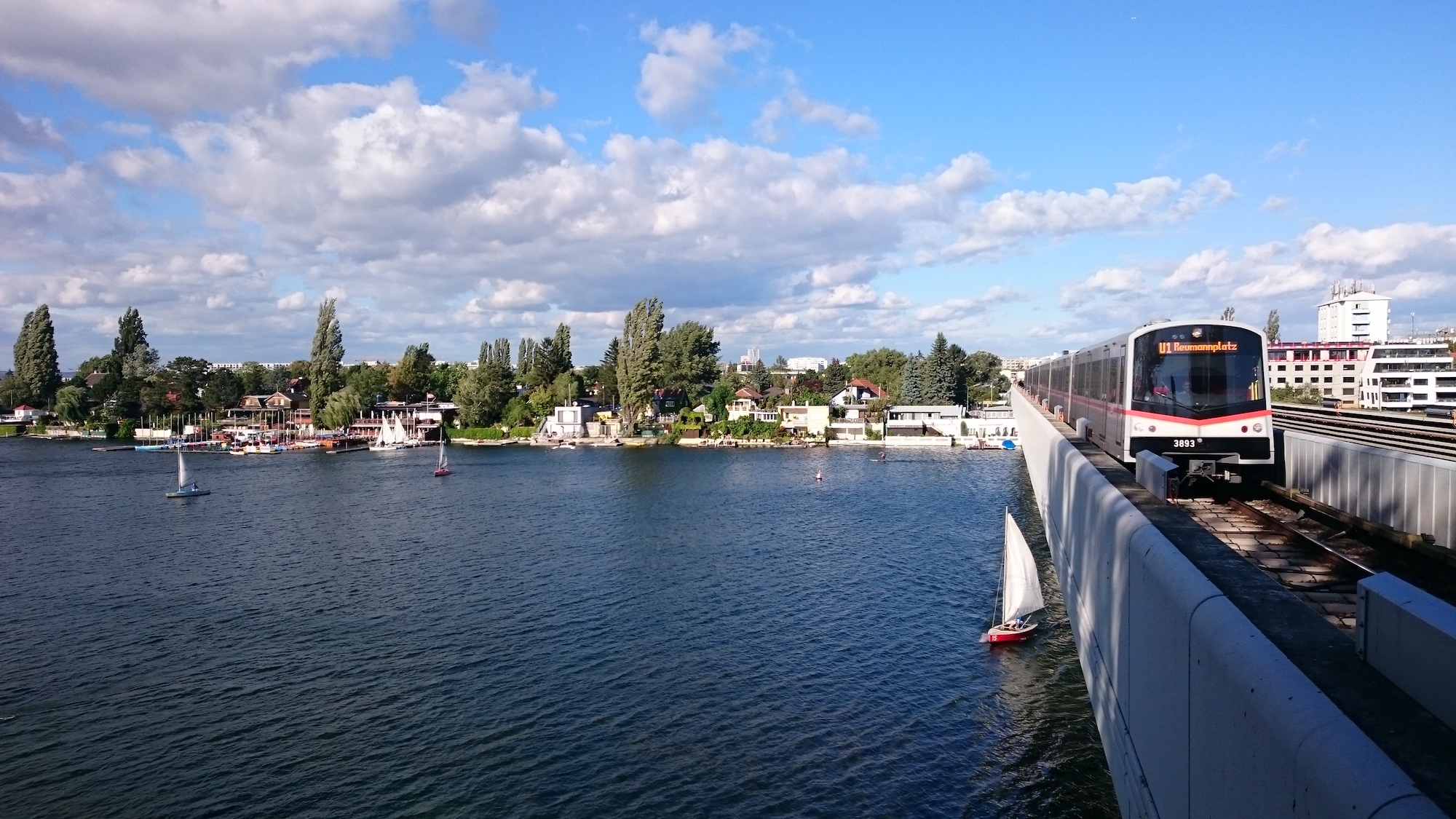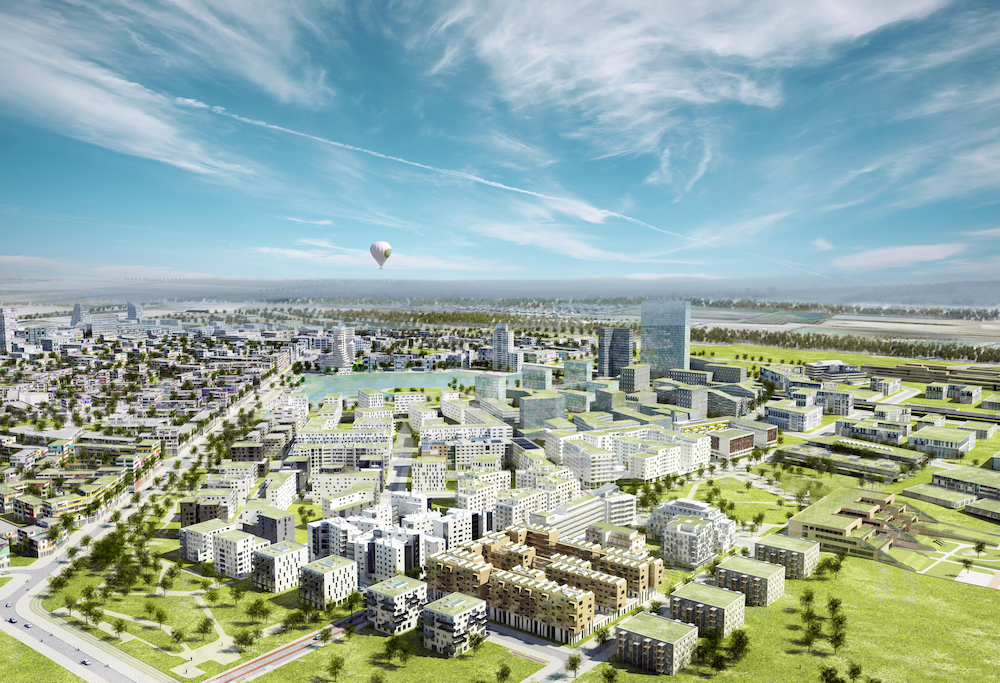(Editor’s note: This is the third how-to-use-the-metro installment for Dispatches’ Storehouse of Knowledge. Dispatches contributor and longtime expat Nina Avramović Trninić has everything you need to know about the Vienna metro.)
Expats, welcome to a booming Vienna
The big news in Vienna is, city officials have recently developed a part of the north side of the city into Seestadt Aspern. Seestadt is an entire new city district, with apartments for 20,000 residents under construction as well as businesses and retail.
The development is being marketed as “Vienna’s urban lakeside.” The Austrian government extended the metro and invested a lot before even having laid the first foundation stone for one building. With that investment, the city made this city area so much more attractive, selling the properties at higher prices, since through the metro connection one has the advantage of living in a peaceful suburb while being able to be in the city within 25 minutes.
Looking into city development and the city infrastructure would be my recommendation before you arrive in Vienna. If you value your time, choose an apartment in the inner districts (1 to 9). They are all extremely well connected by metro, tram and bus and the prices of properties there are constantly rising.
If you value space and nature but still want an extremely good connection, the 13th or the 19th districts are for you (pricey) or 21st and 22nd (cheaper but not so noble looking).
Austria’s state railway – the ÖBB – operates the “Schnellbahn,” a sort of city train that runs throughout Vienna. Schnellbahn connects eight of the biggest city districts: Westbahnhof, Hauptbahnhof, Praterstern, Florisdorf, Bahnhof Meidling, Matzleinsdorferplatz, Rennweg and Wien Mitte, driving to the airport.
Bahnhof means railway station and in this way the railway makes it easy for “Pendlers” – people living on the far outskirts of Vienna – to reach the city and travel through it in 30-to-50 minutes.
Of course, you can always drive your car, but that means paying for parking at least 4 Euros per hour … and sometimes more if you are lucky enough to find parking in inner districts. So if you are planning to meet some friends for drinks or have a business meeting, it will cost you 20 plus Euros just to park. On a monthly basis, it adds up.
Finally, in the States, there is something of a stigma when it comes to taking the metro, and the wealthy tend to avoid them. Not in Vienna. Very often, you find investment bankers and other business people taking the metro to work. Vienna just makes it so convenient.
If you still think you cannot live without a car, you can always try Car2go, a rental car, parked all over the city, that you rent and pay by the minute. One minute costs 0,39 eurocents and one hour 14,90 euros. This way you do not pay for registration of the vehicle, repairs, fuel and other expenses, yet you still have the comfort of the car. Think of it as Uber without the driver.
So if you are looking for a great city with hospitable locals, central geographical location, a lot of housing options, beautiful history AND flexible and various public transport options, Vienna is the city for you!
We know expats arriving in Europe will have a sharp learning curve, trying to figure out how everything works. First and foremost, you have to be able to get around from the time you touch down. So we’re starting with metros.
DISPATCHES: Does the Vienna airport have a metro line running directly into the city?
Once you land at Vienna’s Schwechat Airport, like in any major European city, you can choose between a cab, a rent-a-car, a bus and a train. You’ll see 99 percent of the locals using the train. Why? Because it is easy, fast and cheap.
The Schnellbahn S7 is the line taking you from the airport to the city. It takes for this train 30 minutes to run through the entire city of Vienna, and it connects you with every metro line. More detailed information about the train stations which the S7 drives through can be found here, as well as the explanation to the alternative possibilities of transport from and to the airport (German only).
In addition, here’s a detailed timetable (German only).
 Though there’ll be no timetable for the public transport in the plane cabin itself, once you go through the arrival gate, you’ll find enough information about it on the information displays at the airport itself, or you can ask people working at the many airport info points.
Though there’ll be no timetable for the public transport in the plane cabin itself, once you go through the arrival gate, you’ll find enough information about it on the information displays at the airport itself, or you can ask people working at the many airport info points.
All the personnel, as well as the displays, are available in English.
You can buy a ticket from the airport to the city online through ÖBB (state railway). Click here to see the English version of their website.
The best thing about taking the train to and from the airport is that you can do your check in on the train and save time and money. The one-way ticket will cost you 11 euros, with a round-trip just 17 euros. By comparison, a cab will be anything from 30 euros or more ONE WAY.
(There is Wi-Fi on the train, as well as Wi-Fi in every train station and in the airport if you need to check your information.)
Since a lot of people use this type of transport, you’ll find more than enough displays stating the train, the platform it is on, the direction and the stations the train is driving through, and of course the time. It is exactly like the display you would have for the planes at the airport.
Though a lot of websites offer German-only information, do not be afraid to try out the ticket selling machines. Every one of them is in English as well. And Viennese are also very forthcoming and helpful, as well as very good English speakers. Do not hesitate to ask them! They love showing their hometown in the best light possible. And, of course, showing off their English skills.
Dispatches readers are used to using the metro in cities such as New York, Washington, D.C. and London. How good is the Vienna system?
Unlike in the U.S., Vienna invests a significant amount of money every year in maintaining and upgrading the metro, bus and tram lines. There are currently 5 subway lines: U1 (red), U2 (purple), U3 (orange), U4 (green) and U6 (brown). U5 is planned and going to be built in the next decade. On every train, as well as on the platform display you will find the direction the train is going to and the upcoming train stations. In every train – right above every exit – there is an overview of the whole metro network in Vienna, including every station of every line.
My first experience of Vienna´s metro was great. I had an interview for an intern summer job and had taken the train in from Graz, a 300,000-population city located in southeastern Austria near the border with Hungary. My ex-roommate, who picked me up from the train station, got upset because we had to wait for FOUR minutes for the next metro to come! Since they run every 5 minutes, it meant we had just missed one. In the morning and afternoon during rush hour, they run every 3-to-4 minutes.
For expats used to metros in New York, Washington DC or even London, Vienna operates on a lot higher level of efficiency. So, this is going to be easy.
 The first thing you need to know is, every metro station has ticket machines and you can buy a mobile ticket through your smartphone as well.
The first thing you need to know is, every metro station has ticket machines and you can buy a mobile ticket through your smartphone as well.
The options for paying are with coins, paper money and bank card or credit card. Every machine offers a diversity of languages, from English to Croatian. If you feel insecure and you are there within the working hours (07:00 to19:00) you can also buy a ticket at the counter and ask any questions you have.
The Wiener Linien, a city public transportation company, has an easy-to-use website available, also in English.
One thing that is immensely different in Austria than in USA is that Viennese are very fond of – and use – public transportation. They don’t just tolerate it.
Now that you bought a ticket, you need to validate it if it is daily or hourly, but if you bought a weekly or a monthly ticket it already has a validity date on it, so there is no need to validate it on the entrance to the subway, before the subway stairs.
 Once you reached the city with S7, I would recommend taking the Praterstern exit or Hauptbahnhof if you need to switch transport since they are very well connected to other city lines. If you want to explore the old city right away, exit at Wien Mitte/Landstrasse and take the U3 going to Ottakring, then exit at Stephansdom station or simply walk trough Stadpark (City park) for 5-to-10 minutes, to reach the old city.
Once you reached the city with S7, I would recommend taking the Praterstern exit or Hauptbahnhof if you need to switch transport since they are very well connected to other city lines. If you want to explore the old city right away, exit at Wien Mitte/Landstrasse and take the U3 going to Ottakring, then exit at Stephansdom station or simply walk trough Stadpark (City park) for 5-to-10 minutes, to reach the old city.
The beauty of the Saint Stephan gothic cathedral will take your breath away. In only 15 minutes by foot you can see the famous Vienna Opera, the old Habsburg Hofburg castle, the old Spanish school of riding, the city town hall, as well as the Museums Quartier.
There are so many beautiful historic and modern things to see in Vienna, that you won’t regret buying a yearly ticket for only 365 Euros. And the government makes it an unbeatable deal, with discounted yearly passes and some tax deductions if you use public transport instead of a car.
The whole concept of quality of life is connected to providing residents and visitors with the right infrastructure and service to use the public transport. Ticketing is easy. The system is based on time tickets going from 2.20 euros for 1 ride in duration up to 90 minutes, to 6.70 euros for a 24-hour ticket. There are weekly (16.20 euros) and monthly tickets (48.20 euros), as well as discounted tickets for students and youth at the price of 19.60 euro PER YEAR! To get this student/youth price for a ticket you must have a student ID with you at all times.
You can even buy a Vienna shopping ticket, a discounted daily ticket (6.10 euros) meant for people spending the one day in Vienna and leaving by 20:00. An Easy City Pass Vienna (26.90 euros) gives you a discount to museums, restaurants and stores.
There is very little security required in the metro and Viennese in general are very relaxed about the metro culture.
Digital details:
We can recommend several transportation apps such as Scotty on the OBB site, or in English on Google Play.
For ticket information, check this German site with detailed explanations, or an English version with less information.















